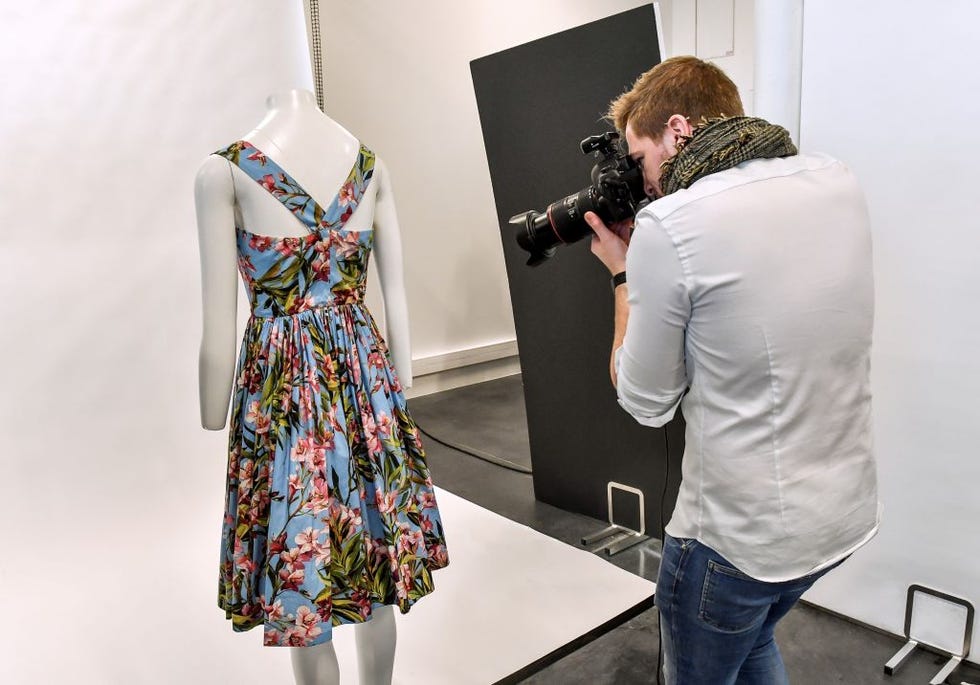Kantamanto Market, a secondhand exchange in Accra, Ghana, has piles of clothing taller than the people walking through it. When the wind picks up, T-shirts whirl around the seemingly endless rows of clothes, most of which have been discarded and donated from Canada, the United States, and Europe.
It’s impossible to know the exact amount of clothing in the world, but between social media hauls, overwhelmed secondhand markets, and textile-burdened landfills, all signs indicate that we have too much. Still, more than 100 billion new pieces are created every year, and many will meet the same sad fate as those flying T-shirts. That’s why the call for a circular fashion industry is getting louder than ever.
Circularity is “the concept that we can produce goods that cause no harm to the planet in manufacturing and that all parts can be reused, with no virgin resource extraction at the start,” explains Rachel Kibbe, CEO and founder of consulting service Circular Services Group, adding that it’s an ideal and not a solid set of standards. “It means striving to produce with as little harm to people and the planet as possible,” she says. Circularity takes the goal beyond sustainability, meaning that every moment along the way, from the beginning of the loop (the way a garment is produced) to the end of an item’s life (how it will be recycled or repurposed, starting the cycle again), must be thought out in advance by brands.
Long before “reduce/reuse/recycle” was a constant refrain, circularity was prized in Indigenous cultures, whose people thought about the life cycles of objects and how they could reduce harm to the environment. While the concept isn’t new, nor even a solution for clothing waste alone, there is a unique opportunity in fashion. For starters, there is already a popular structure that is an integral part of circularity, which thousands of us use regularly: resale. E-commerce platforms like ThredUP, Poshmark, and Depop have extended the lives of millions of items. Alexander McQueen and Gucci have linked up with third-party resellers Vestiaire Collective and The RealReal, respectively, to encourage customers to keep products in the loop. Some labels, like Oscar de la Renta, have done this on their own, launching brand-specific resale platforms to keep the pieces out of landfills and donation bins.
There’s also the fact that many textiles, unlike plastic, can be broken down and made new over and over. “The ideal future state of circularity is fiber-to-fiber recycled garments—e.g., turning cotton shirts back into cotton yarn that can be used to make new garments,” says Stuart Ahlum, co-founder of sneaker brand Thousand Fell and recycling program SuperCircle. With SuperCircle, customers can download a shipping label and mail in their used garments, which will then be broken down into new fiber. (Brands like Reformation have begun using this technology to lessen the environmental impact of their clothing.)
Despite these advancements, there is still a significant shift that has to happen with anyone making new clothes. Nemanthie Kooragamage, director of group sustainable business at MAS Holdings, a manufacturer of brands like Patagonia and Lululemon, explains, “For anything to be truly circular, the product must be designed for reuse.” Designers could tap technology like QR codes and blockchain to allow digital tracing of a product’s entire life cycle, identifying knots in the supply chain and keeping brands accountable. And they could encourage resale before a garment is made, by using textiles and design practices that are easier to break down or upcycle.
So what can shoppers do to contribute to fashion’s new circular model? Outside of reselling clothes, most circularity advocates agree that it boils down to this: “Make fewer purchases,” Kibbe says. “If someone decides to purchase an item, whether it’s used or new, they should love it enough to pass it on to another person when it no longer serves them.”
This article appears in the April 2023 issue of ELLE.
Alyssa Hardy is a fashion journalist and the author of Worn Out: How Our Clothes Cover Up Fashion’s Sins. She was formerly the Fashion News Editor at Teen Vogue and the Senior News Editor at InStyle. Her work has also been featured in Vogue, Refinery29, Allure, Glossy, Fashionista, Marie Claire, NYLON, and Coveteur.



